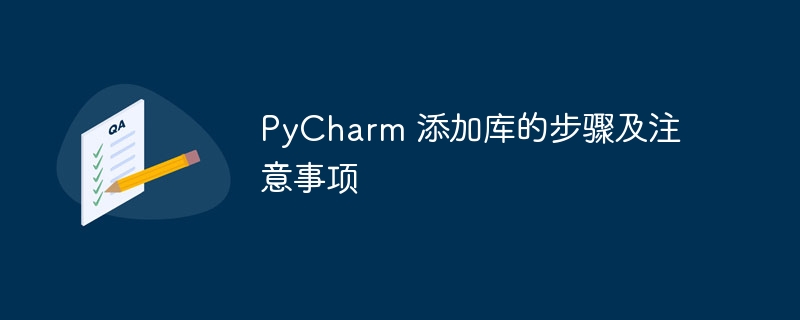

PyCharm is a powerful Python integrated development environment (IDE). When writing Python programs, we often need to use various third-party libraries to extend its functions. This article will introduce how to add libraries in PyCharm, focusing on the steps to add libraries and matters needing attention. At the same time, specific code examples will be given to help readers understand better.
First, open PyCharm and click "Create New Project" to create a new project. After selecting a project name and location, click "Create".
In the bottom toolbar of PyCharm, find the terminal (Terminal) and open it. In the terminal, you can use the pip tool to install the required libraries. For example, if we want to install a library named requests, we can enter the following command in the terminal:
pip install requests
After installing the library, you need Add libraries to your project to reference them in your code. In PyCharm, click "File" -> "Settings" -> "Project: your_project_name" -> "Python Interpreter", and click the plus button in the upper right corner of the window that opens. Search for the library you want to add in the pop-up window and click "Install Package".
The following is a simple example that demonstrates how to use the requests library in PyCharm to send an HTTP request:
import requests
url = 'https://jsonplaceholder.typicode.com/posts/1'
response = requests.get(url)
if response.status_code == 200:
data = response.json()
print(data)
else:
print('Failed to retrieve data.')Through the above code example , we can see that by importing the requests library and leveraging its functionality, we can easily send HTTP requests and get response data.
Summary: Through the steps and precautions introduced in this article, I hope readers can add the required libraries to PyCharm more smoothly and use them flexibly in the project to improve the function and performance of the code. I wish readers to go further and further on the road of Python programming and develop more excellent works!
The above is the detailed content of Steps and points for adding libraries to PyCharm. For more information, please follow other related articles on the PHP Chinese website!
 ajax tutorial
ajax tutorial
 WiFi shows no access to the Internet
WiFi shows no access to the Internet
 Domestic free ChatGPT encyclopedia
Domestic free ChatGPT encyclopedia
 How to check server status
How to check server status
 bootmgr is missing and cannot boot
bootmgr is missing and cannot boot
 How to delete your own works on TikTok
How to delete your own works on TikTok
 The difference between large function and max function
The difference between large function and max function
 Self-study for beginners in C language with zero foundation
Self-study for beginners in C language with zero foundation




